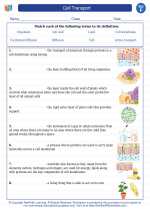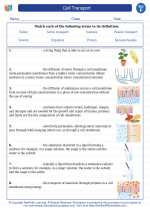Atomic Mass
Atomic mass is a measure of the mass of an atom. It is the sum of the number of protons and neutrons in the nucleus of an atom. The atomic mass is measured in atomic mass units (amu) and is typically listed below the chemical symbol for an element on the periodic table.
Calculating Atomic Mass
The atomic mass of an element is calculated by adding the number of protons and neutrons in the nucleus. Since protons and neutrons have a mass of approximately 1 amu each, the atomic mass is the sum of these two values.
Isotopes and Atomic Mass
Many elements exist in nature as a mixture of isotopes, which are atoms of the same element that have different numbers of neutrons. Each isotope contributes to the overall atomic mass of the element based on its abundance and mass number.
Study Guide for Atomic Mass
- Definition: What is atomic mass and how is it measured?
- Calculation: What is the process for calculating the atomic mass of an element?
- Isotopes: How do isotopes affect the atomic mass of an element?
- Practice Problems: Work through sample problems to calculate atomic mass and determine the contributions of isotopes.
- Real-World Applications: Explore how atomic mass is used in various scientific and industrial contexts.
◂Science Worksheets and Study Guides Sixth Grade. Cell Transport
Worksheet/Answer key Cell Transport
Cell Transport  Worksheet/Answer key
Worksheet/Answer key Cell Transport
Cell Transport  Vocabulary/Answer key
Vocabulary/Answer key Cell Transport
Cell Transport  Vocabulary/Answer key
Vocabulary/Answer key Cell Transport
Cell Transport 

 Worksheet/Answer key
Worksheet/Answer key
 Vocabulary/Answer key
Vocabulary/Answer key
 Vocabulary/Answer key
Vocabulary/Answer key

The resources above cover the following skills:
Reading Standards for Literacy in Science and Technical Subjects
Craft and Structure
Determine the meaning of symbols, key terms, and other domain-specific words and phrases as they are used in a specific scientific or technical context relevant to grades 6-8 texts and topics.